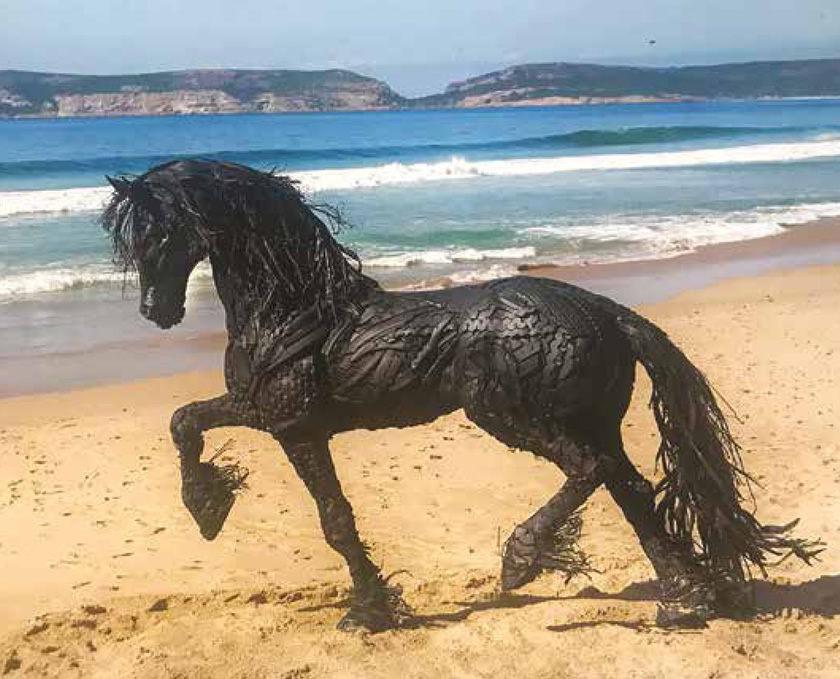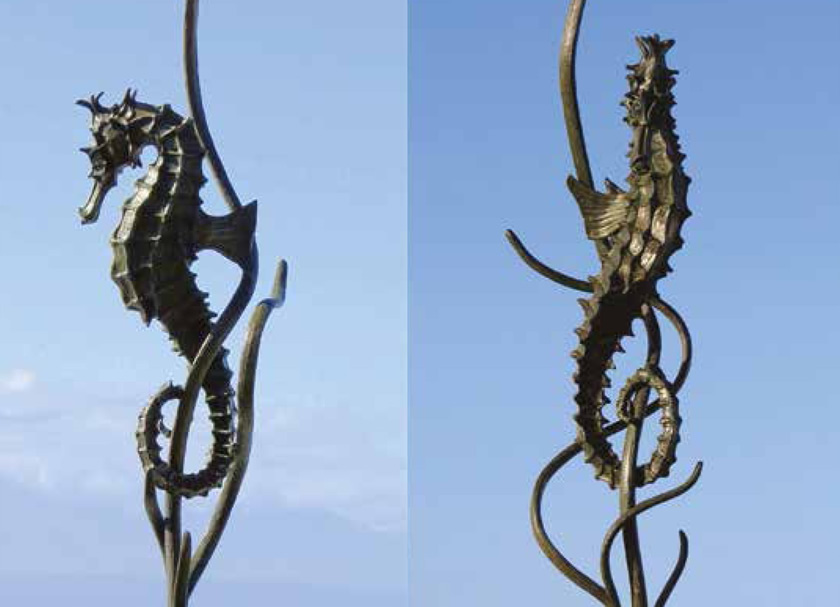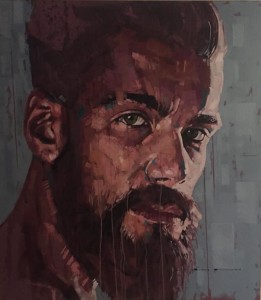
Consider for a moment what we would know of ancient cultures without art. From the cave paintings of Cro-Magnons to the Pieta of Michelangelo to the great work of our modern masters, art has been one way we humans have expressed ourselves through the ages. Before the written word, art was the only way our ancestors were able to convey the religious beliefs, their views on the world around them and the things that they felt were most important.
Plett is home to highly recognized artists including ceramacists, fine artists, photographers and sculptors. In this issue of Plett Culture and Heritage we feature two of Plett’s long-standing residents and sculptors, Malcolm ‘Salty’ Solomon and Robert Leggat.
MALCOLM SOLOMON
What makes Malcolm’s art so exciting, is that you never can tell what he’s going to create next. Banished are the confines of genres and stereotypes and what you’re left with is altogether thrilling and unique. A deep thinker to be sure, Malcolm tells a profound story of human nature and the order of things through his sculptors.
Shortly after opening The Keyhole Gallery in 2006, the demand for his talent was substantial. Visitors are amazed to discover that the gallery is filled with work from one artist only. He creates with a host of different materials including wood and stone carvings, furniture, paint finishes, sign-writing, murals, sketching, paintings, and much more.
He has explored most areas of art and materials and is undaunted by mixing up and experimenting with any material or product. To say he loves a challenge is an understatement. He says, “I have worked with wood for many years… I’ve done a lot of paintings in my time too…. but none since I’ve been working in bronze! So I wouldn’t mind doing another painting sometime. I do still work a lot with resins, polyurethanes and various other composites, and am very much enjoying experimenting and playing around exploring the endless possibilities of these versatile products. I’ve tried just about everything … everything…ummmm… glass! I haven’t tried glass. That would be really fun to explore.”
Malcolm spent four years in the USA, where he created a niche market, producing custom, hand-carved furniture and front doors for the ‘jet set’ while also experimenting with mould making and various casting mediums. In 2002 he discovered the magical art of bronze casting and fell in love with its unique properties.

Seahorse in bronze by Malcolm Solomon
His early works were seemingly simple, but all had a deeper hidden focus on poise, balance and flow. His more recent work, aside from the many commissions, is far more stylized, abstract or organic in nature, with much greater attention given to contrasting textures and planes and the effect that light, shadow and reflection work with the sculpture, to suggest form and movement.
The use of negative spaces and implied shapes, where the eye subconsciously completes the form. The subjects of his latest works are about his experiences and observations of life on Earth; as well as 3D manifestations of his thoughts on personal, social, financial or his political subjects. Malcolm’s musings have been inspired by the act of physically doing art and are born from the influence of nature. In particular, what he has seen and experienced while living in Plettenberg Bay.
“I am inspired by the process of creation itself -what we think, see, do and say is creativity in some form or other…everything is creativity. So I sculpt as it’s a 3-Dimensional canvas for me to express my feelings and insight into life and the world around me. I love all expressions of creativity, be it natural or man-made. I love to use texture, shadow and light and the effect it has on the form. It can capture the mood and feeling that I want to portray. It freezes in time the physical energy exerted in the creative process. So my greatest inspiration must be nature… as it has created all of us creators… it’s the essence of art…the first artist. After this we are all merely portraying different facets of creativity.”
Malcolm has captured the essence of what inspires him to create. That is the beauty of art – finding or allowing your passions to navigate your hands, heart and mind to create. When you’re actually, physically working on a project and find that either what you thought would be perfect isn’t going to work at all and then come up with something new, making it even better than what you were thinking. We are very fortunate to decorate our days with Malcolm “Salty” Solomon’s creativity that can be seen in our streets, offices, homes and beachfront.
ROBERT LEGGAT
Anyone who’s ever gazed in wonderment at the bronze dolphin and her calf at the traffic circle in Plett at the intersection of Main and Odlands, will have to concede that Robert Leggat is a very talented artist. He nurtures an unquenchable passion for the environment and its preservation – all of this comes through very strongly in his art. Magnificent, lifelike creations are his signature and his works can be seen all over the Bitou region and beyond.
Robert’s success as an artist is due not only to his attention to detail but also to his fantastically creative mind and unbridled passion. His love of nature and encouragement from a teacher during his formative years at remedial school helped with his artistic journey. “I have always loved Rembrandt Bugatti because of his subtle attitude and balance in his sculptures,” says Robert.
In 2006 he started his own “Bronze Fields Foundry” on a smallholding in Harkerville. He works with different mediums, specializing in bronze, silver and stainless-steel, inlaying semi-precious stones such as tourmalines and garnets. What makes him so unique in his field, is that he doesn’t delegate any of the complicated processes involved in creating a bronze.

Horse by Robbert Leggat
He is personally involved, from start to finish, in the making of these incredible creations – the drawing; creating a maquette; building an armature (the internal framework to support the sculpture); casting the sculpture using the lost wax method (cire perdu) and finally, the patination.
Working with different mediums can be both daunting and exciting. When asked what other areas of art he would like to explore, Robert comments; “Apart from bronze sculptors, I would like to do some upcycling with car tyres from the national roads.” A very interesting and exciting concept, a great initiative in art during these times.
Robert is not only a local and national superhero, but his work is represented in private collections as far afield as Britain, Switzerland, Germany and the United States. One of his more locally recognised creations, the Friesian horse is a real showstopper and has been very well received by the art community. Keep an eye on this maverick as there is undoubtedly so much more to come.












